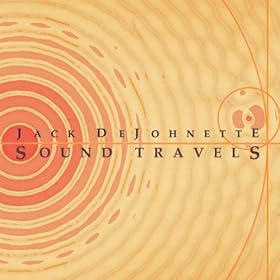Yes “The Monk Project” is yet another homage to Thelonious
Monk. Yes, there is a Monk shot out album on every street corner. But “The Monk
Project” is not your average shot out to Monk. Trumpeter Jimmy Owens is the brains
behind “The Monk Project”. Owens is a fantastic musician and arranger. Owens
made his bones on the jazz big band circuit, so swinging is in his blood.
For “The Monk Project,” which IPO Records will put
out January 12. Owens gives a facelift to some of Monk’s classic tunes “Blue
Monk,” “Well You Needn’t,” and “Brilliant Corners,” for example. Owens kept
things respectable, and he never took stupid risks with Monk’s work. Hell, Monk
music is hard enough to play as is. Owens understands that.
Owens staffed the date with name brand swingers such
as Kenny Barron, Wycliffe Gordon, Marcus Strickland, Kenny Davis, Howard
Johnson and Winard Harper. “The Monk Project” is a worthwhile nod to Monk.
Tom Wetmore is a jazz piano player and a composer
from Massachusetts in the process of building his brand brick by brick. Thusly,
Wetmore has earned enough street cred to work with greats such as Clark Terry,
Slide Hampton, and Bernard Purdie. “Desired Effect” is Wetmore’s first time in
the captain’s seat. The album is due out January 17.
On the album, Wetmore made some smart choices.
He played the electric piano throughout, which gives many of the songs a
latter-day Miles Davis feel, particularly “Wild Card” and the title cut.
Wetmore
smartest move was spreading around the rhythm section duties to guitar players
Justin Sabaj and Brad Williams. This is not the can of jazz album picky jazz
purists fancy. Wetmore infused every square inch of it with the zest only a
hungry upstart embodies.
“Smul’s Paradise,” the new album by baritone sax
player Gary Smulyan, is an organ driven project Smulyan always wanted to make. Smulyan
is jazz’s sharpest baritone player (at least he is in my book) and is the heir
apparent to the greatest baritone player off all times the late Pepper Adams.
“Smul’s Paradise” is Smulyan nod to the era in
jazz when organ albums put out my organ greats Lonnie Smith, Don Patterson,
Jimmy Smith, and Larry Young were popular. Smulyan was a big fan of that
period. Organ jazz is played out now although the jazz world is littered with
some wonderful organ players.
Smulyan for this project hired one of the finest
in Mike LeDonne.
Although the album is billed as an organ throwback project, “Smul’s
Paradise” is the kind of biscuits and gravy jazz album Smulyan always makes. Still
he deserves props for stepping outside his comfort zone at this leg of his
career. “Smul’s Paradise will be available nationwide January 17 on Capri
Records.
Do not be alarmed if you never feel like dancing
while listening to Omar Sosa’s new date “Alma,” which is Sosa most pensive
album to date, and which I found hard to categorize. Normally, Sosa plays damn
near ever form of jazz from Afro-Cuban to free jazz. Apparently, Sosa was in a
solemn mood when he made this album with the celebrated Italian trumpeter Paolo
Fresu.
This album is not the first time Sosa and the trumpeter have hooked up.
In 2007, they put out the album “Promise,” and two year later they toured Italy.
Fresu is a good trumpeter who invested a great
deal of time studying Miles Davis. Fresu fits with Sosa like peanut butter and
jam. Sosa is a creative guy. He likes to use gadgets. He uses plenty of them on
“Alma”. Sosa is a swinger and an exciting showman as well. This time around Sosa seems perfectly
content with showing off his virtuosity.
What is there left for drummer Jack DeJohnette
to do? DeJohnette has been involved in every jazz movement since hard bop.
To date, he has made over 30 jazz albums as a leader. It would consume too much
time to count his output as a sideman.
This year DeJohnette will receive the National
Endowment for the Arts Jazz Master Fellowship. That is the highest honor for a
jazz man. That alone seems like enough for the drummer to prop his feet up on
his laurels, right? Not DeJohnette. January 17, he will make public his new
album “Sound Travels”.
Many DeJohnette fans will be a bit disappointed
because outside of composing all the tunes on the album DeJohnette did not play
a big role. He centered the compositions around he’s special guest. There are
plenty.
“Sound Travels” is a low-fat jazz
album. DeJohnette shares the light with established stars Bruce Hornsby, Tim
Ries, and Bobby McFerrin and contemporary heavies Esperanz Spalding,
Ambrose Akinmusire, Lionel Louke and Jason Moran. This is a cross cultural get
together.






